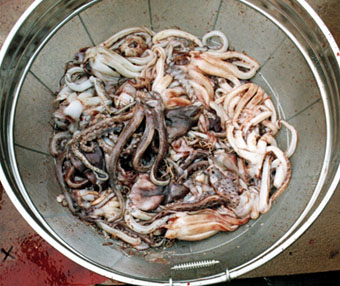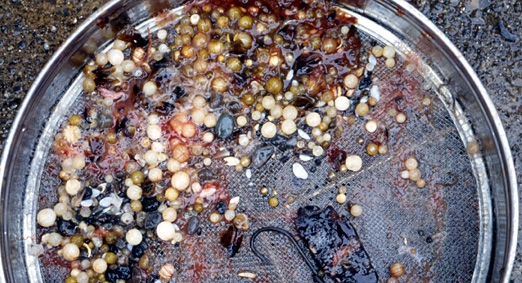
Contents of the third stomach of sperm whale caught off Hokkaido. (Photo
by T. Tamura, Research Institute of Cetacea)
Click on an image to see an enlarged view; click X to close
Animals can be identified to species using external
characters during the undigested to 2nd digestion stages only. During stages 3-5 species can be identified
using beaks only. In stages 6-7 species
identification is very difficult except with beaks that have very specific
characters. Lower beaks are typically
used for species identification therefore beaks should be removed from buccal
masses collected at digestion stages 3-4.
|
|
Most specimens collected from stomach
contents are fragile due to the effects of digestion. This is especially true for the head-mantle
connection in cephalopods so care is required when removing specimens from the stomach
to avoid breaking them apart. During
preliminary sorting it is better to sort each of the digestion stages
individually and record the stage. Based on that data you can estimate feeding intervals, the number of
times they feed, and how much they feed during each event. For reference, stages of digestion will be
shown below.
Undigested: almost no effects from
digestion except parts that were already damaged
Stage 1: general shape is maintained but epidermis
is lost; fins and arm tips partially digested.
Stage 2: fins and arms separated from mantle;
armature of arms and tentacles remain.
Stage 3: viscera is digested and arm and
tentacle armature falls off
Stage 4: buccal mass separates from arms
Stage 5: beaks separate from buccal mass
and separate into upper and lower beaks (buccal mass muscle is completely
digested)
Stage 6: marginal parts of beaks are
destroyed; only solid parts remain
Stage 7: beaks break into fragments
|
